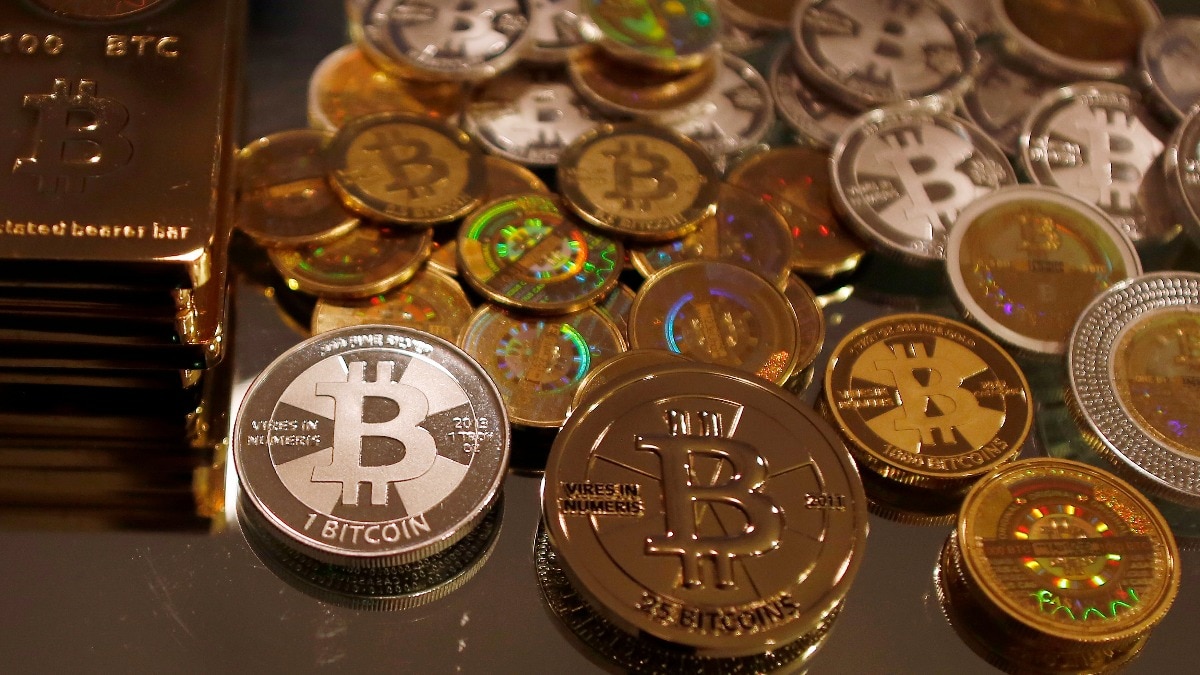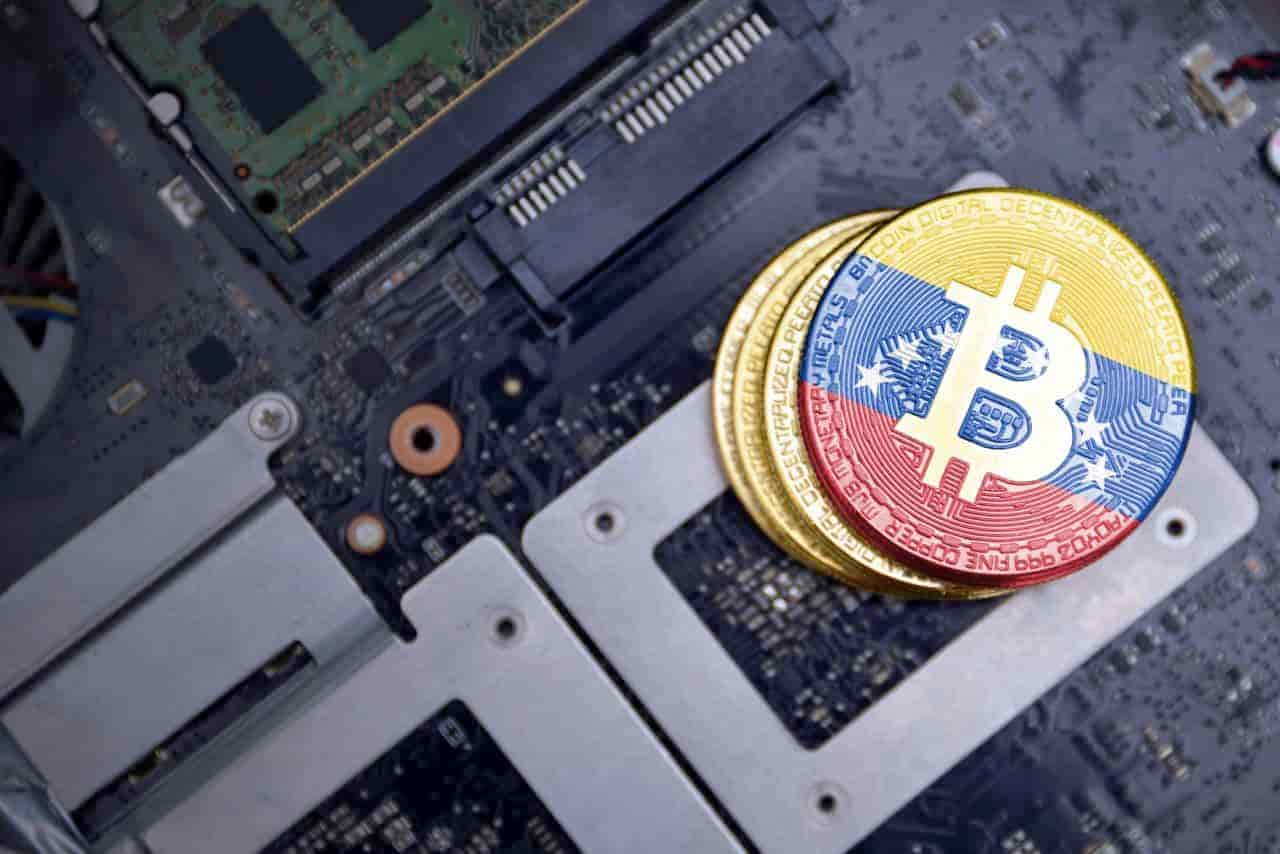Crypto
Hamas Still Struggles To Use Crypto, But Is Fundraising In Other Ways

Palestinian members of the Ezzedine al-Qassam Brigades, the armed wing of the Hamas movement, take … [+]
The Gaza-based terrorist group Hamas launched a wide scale attack on Israel on October 7, launching thousands of rockets and reportedly killing over 700 Israeli civilians. In addition, the terror group took approximately 200 hostages. How did Hamas, seemingly cut off from the global financial system as a designated terrorist organization, get the funds to carry out this attack? Although the Financial Times reported that cryptocurrency played a significant role, with over 100 suspicious Binance exchange accounts now frozen and under investigation, cryptocurrency makes up only a small piece of a much larger terror financing puzzle.
TRM Labs, the blockchain intelligence company where I work, has identified a number of fundraising efforts since the war began. For example, Gaza-based group GazaNow, which is actively supporting Hamas, is soliciting donations in cryptocurrency. Addresses used by Gaza Now have seen a total incoming and outgoing volume of about $6000 following the attacks and about $6 million overall. Notably between August 2021 and July 2022, a Gaza Now address received $12,000 from terror group Palestine Islamic Jihad, a Hamas supporter. The address, which was first active in August 2021, has received nearly $800,000 in total and less than $5000 worth of crypto since the attacks. However, these numbers pale in comparison to fiat fundraising conduits.
Hamas and other terrorist organizations rely, in large part, on aid from the international community. Iran provides an estimated $100 million annually (in fiat), according to the U.S. Department of State, with countries such as Qatar and Turkey also providing funding. European countries, the United States, and even Israel have provided significant humanitarian assistance to Gaza over the years that has likely gone to fund Hamas’ malign activity. In addition to nation state support, Hamas has a global network of charities, a diaspora of private donors, and, according to Euronews reports, the terror org collects up to $15 million from the annual taxes it imposes on goods coming from Egypt, in addition to import taxes on products from the West Bank.
Ironically, the flow of funds to Hamas in cryptocurrencies are the most visible and easiest to track, block and seize. Because of the native qualities of public blockchains – traceable, transparent, immutable – Israeli and U.S. authorities have had success tracing, tracking and seizing funds destined for Hamas.
One likely reason for the low donation volume to Gaza Now and other Hamas supporters is that Israeli authorities are targeting addresses associated with the fundraising campaigns. Some fundraising efforts have publicly said that they are no longer accepting donations (at least publicly) because their accounts are being targeted. On October 9, after the recent terrorist attack, GazaNow announced that they were suspending their public fundraising efforts, directing supporters to reach out through personal messaging. An admin of the campaign would then provide a link to a fundraising campaign on Instagram. Within minutes that campaign was suspended as well.
Fundraising Efforts Since War Broke Out
In addition, the cyber branch of the Israel Police’s Lahav 433 announced the seizure of cryptocurrency accounts belonging to Hamas on October 10. According to the Israeli Police, Hamas had been using accounts to raise money on social media since Saturday’s attacks. Lahav 433 is working with the Defense Ministry, Shin Bet, and other intelligence agencies in the effort to shut down cryptocurrency channels that terrorist groups are using.
Then, on October 16, the stablecoin issuer Tether
USDT
TRX
Hamas: One Of The First Terrorist Organizations To Use Crypto
Since at least early 2019, the Izz-Al Din-Al Qassam Brigades, Hamas’ military arm, has attempted to use cryptocurrencies as an alternative fundraising method to support its military operations. Hamas initially tested cryptocurrency fundraising by soliciting Bitcoin
BTC
In August 2020, the United States Department of Justice announced the global disruption of three terror financing campaigns including the seizure of cryptocurrency accounts associated with al-Qassam Brigades. According to the DOJ release, the “three terror finance campaigns all relied on sophisticated cyber-tools, including the solicitation of cryptocurrency donations from around the world.”
In the first case, the al-Qassam Brigades posted a call on its social media page for bitcoin donations to fund its campaign of terror, then moved the request to its official websites. Working together, IRS-CI, HSI, and FBI agents tracked and seized 150 cryptocurrency accounts that laundered funds to and from the al-Qassam Brigades’ accounts. With judicial authorization, law enforcement seized the infrastructure of the al-Qassam Brigades websites and subsequently covertly operated alqassam.net. During that covert operation, funds from persons seeking to provide material support to the terrorist organization were routed to wallets controlled by U.S. law enforcement.
U.S. And Israeli Authorities Target Hamas’ Use Of Cryptocurrency
Over the last few years, Israel’s NBCTF has repeatedly targeted Hamas’ use of cryptocurrency, seizing dozens of cryptocurrency addresses with tens of millions of dollars in volume, controlled by entities affiliated with Hamas. These include Gaza-based businesses such as Dubai Co. For Exchange, al-Muhtadon, al-Mutahadun For Exchange and al-Wefaq Co for Exchange. The overwhelming majority of the funds seized have been Tether on the Tron network.
The NBCTF released a copy of an administrative seizure in July 2021 for bitcoin, dogecoin, TRON, and other cryptocurrency addresses controlled by agents of Hamas. The NBCF seizure revealed the growing sophistication of terrorist financing campaigns, which are now using multiple chains and currencies to evade sanctions and detection by law enforcement. A senior Hamas official reported to the Wall Street Journal in 2021 that its fundraising strategies continue to evolve as more restrictions are being placed on it. This evolution will likely involve a continued shift to multi-asset donations and increasingly sophisticated laundering methods.
Al-Qassam Brigades announced in April 2023 that it would stop receiving donations in bitcoin “out of concern about the safety of donors and to spare them any harm,” adding that it had seen an “intensification of hostile efforts against anyone who tries to support the resistance through this currency.”
While Israel executes a kinetic response, hunts terrorist leaders, and plans the rescue of hostages, it is clear that the focus is also on reducing crypto fundraising among terrorist organizations. As the digital world rapidly evolves, we are likely to see more attempts by terrorist financiers to take advantage of the promise of blockchains to move funds at unprecedented speed and scale. But, we will also see authorities in the U.S., Israel and around the world leverage blockchain technology to stop them.

Crypto
Top Trader Ditches Bitcoin For Altcoins, 'Dogecoin Killer' Shiba Inu's Potential Breakout And More: This Week In Cryptocurrency

The week was a rollercoaster ride in the world of cryptocurrency. From a top trader’s surprising move to a CEO’s political warning, the crypto market was buzzing with activity. Here’s a quick recap of the top stories that made headlines.
Top Trader Ditches Bitcoin for Altcoins
Renowned cryptocurrency trader Michael van de Poppe shocked the market by announcing that he had sold all his Bitcoin holdings to invest in altcoins. Despite Bitcoin’s recent weak price action, Van De Poppe clarified that his decision was not due to a loss of faith in Bitcoin. Read the full article here.
Uniswap CEO’s Political Warning
Hayden Adams, CEO of Uniswap UNI/USD, criticized the Biden administration for underestimating the political significance of cryptocurrency. Adams likened the administration’s oversight to a severe strategic miscalculation, expressing concern that this could alienate a significant voter base and impact campaign funding. Read the full article here.
See Also: ‘Dogecoin Killer’ Shiba Inu Pumps 6%: ‘I Felt Underexposed,’ Says Trader Who Sees More Short-Term Upside
Millionaire Trader’s Meme Coin Success
Trader ‘Bonk Guy’ revealed a seven-figure profit in 48 hours trading AMC AMC/USD and GameStop GME/USD derivatives on Solana. Bonk Guy invested around $155,000 in trade, which is currently worth $1.3 million, marking 641% gains. He believes the real “meme coin season” hasn’t even begun yet. Read the full article here.
‘Dogecoin Killer’ Shiba Inu’s Potential Breakout
Crypto trader Javon Marks predicts that ‘Dogecoin Killer’ Shiba Inu SHIB/USD could surpass its all-time high of $0.000088598, implying a price appreciation of over 282% from current levels. Marks suggests that the meme coin is currently in an “intermission” phase before continuing its upward trajectory. Read the full article here.
Dogecoin’s Potential Resurgence
Crypto Kaleo expressed his belief in Dogecoin’s DOGE/USD resurgence, attributing it to the retail sector’s renewed risk appetite. He emphasized Dogecoin’s enduring relevance, stating, “Dogecoin isn’t dead. As soon as it starts to catch a bit of a bid, it will move vertical once again.” Read the full article here.
Read Next: Donald Trump’s Election Odds Just Spiked To 51% According To This Crypto Prediction Market
Read Next: Why This Crypto Market Is ‘A Bear Trap’ And Which Coins This Trader Is Backing
Image via Shutterstock
Engineered by
Benzinga Neuro, Edited by
Anan Ashraf
The GPT-4-based Benzinga Neuro content generation system exploits the
extensive Benzinga Ecosystem, including native data, APIs, and more to
create comprehensive and timely stories for you.
Learn more.
Crypto
Crypto lender Genesis to return $3 billion to customers in bankruptcy wind-down

Crypto lender Genesis Global received a significant victory in bankruptcy court on Friday, securing approval for its liquidation plan that will return approximately $3 billion in cash and cryptocurrency to its customers. The ruling, however, delivers a blow to Genesis’s owner, Digital Currency Group (DCG), which will receive no recovery from the bankruptcy.
U.S. Bankruptcy Judge Sean Lane overruled DCG’s objection to the plan, which centred on the valuation of crypto assets. DCG argued that customer claims should be capped at the value of cryptocurrencies in January 2023, when Genesis filed for bankruptcy. Crypto prices have surged since then, with Bitcoin, for example, rising from $21,084 in January 2023 to its current price of around $67,000.
Judge Lane rejected DCG’s argument, stating that even with the lower valuation, Genesis would have to prioritise paying other creditors, including federal and state financial regulators with claims totalling $32 billion, before distributing funds to its equity owner.
“There are nowhere near enough assets to provide any recovery to DCG in these cases,” Judge Lane wrote in his ruling.
Genesis aims to return funds to customers in cryptocurrency wherever possible, although it lacks sufficient crypto assets to fully repay all outstanding claims.
Sean O’Neal, an attorney representing Genesis, refuted DCG’s assertion that customers could be paid in full based on the lower January 2023 valuations. “We don’t buy into the idea that claims are capped at the petition date value,” O’Neal stated.
Genesis initially estimated in February that it could repay up to 77% of the value of customer claims, subject to future fluctuations in cryptocurrency prices.
This court approval marks a significant step forward in the resolution of Genesis’s bankruptcy, providing much-needed relief to its customers while leaving its owner, DCG, without any financial recovery.
Crypto
Venezuela to shut down cryptocurrency mining farms

Venezuela’s Ministry of Electric Power announced it would disconnect all cryptocurrency mining farms from the national power grid (SEN, Sistema Electrico Nacional). The measure aims to control the high energy demand from these mining farms and ensure reliable service for citizens.
AlbertoNews, a local media outlet, reported the announcement on May 18.
“The purpose is to disconnect all cryptocurrency mining farms in the country from the SEN [National Electrical System], avoiding the high impact on demand, which allows us to continue offering an efficient and reliable service to all the Venezuelan people,”
the Ministry reported in its account in Instagram.
Notably, the announcement followed the seizure of 2,000 cryptocurrency mining machines in the country. This action is part of the government’s ongoing anti-corruption campaign. Leading to the arrests of several officials from state institutions.
Corruption with the National Superintendency of Cryptoassets
The National Superintendency of Cryptoassets (Sunacrip) has been under a restructuring board since the arrest of Superintendent Joselit Ramírez. Ramírez has connections to Tareck El Aissami, former Petroleum Minister and former president of Petróleos de Venezuela (PDVSA).
On that note, El Aissami was charged with treason, embezzlement, misuse of influence, money laundering, and criminal association.
Venezuela power grid issues and cryptocurrency mining
Venezuela has faced an ongoing electricity crisis since 2009, worsened by massive blackouts in 2019 that left cities without power for up to seven days. Frequent power outages have negatively affected the country’s quality of life and economic activities.
Therefore, Governor of Carabobo state, Rafael Lacava confirmed restrictions on cryptocurrency mining farms due to their significant electricity consumption. He urged residents to report illegal cryptocurrency mining operations to prevent power shortages.
“If you, neighbor, see a house that you know, tell that person to turn off the farm, or else report it, because when they turn off the light, because you have to give light to a man so that he can earn some reales (money), you are left without electrical service.”
– Rafael Lacava
As reported by AlbertoNews, experts attribute the crisis to poor maintenance and inadequate investment in the power grid. Meanwhile, the government blames sabotage and has promised to modernize the state-controlled power network.
Overall, Bitcoin (BTC) and cryptocurrency mining are known worldwide for their high energy consumption. Countries like China and Cazaquistan have banned the activity to preserve their power grids, centralizing mining in fewer locations.
Therefore, the fewer countries allowing this activity, the higher the security concerns will be, as a few miners dominate block discovery.
-

 Finance1 week ago
Finance1 week agoSpring Finance Forum 2024: CRE Financiers Eye Signs of Recovery
-

 World1 week ago
World1 week agoIndia Lok Sabha election 2024 Phase 4: Who votes and what’s at stake?
-

 Politics1 week ago
Politics1 week agoBiden’s decision to pull Israel weapons shipment kept quiet until after Holocaust remembrance address: report
-

 News1 week ago
News1 week agoTornadoes tear through the southeastern U.S. as storms leave 3 dead
-

 News1 week ago
News1 week agoThe Major Supreme Court Cases of 2024
-

 World1 week ago
World1 week agoA look at Chinese investment within Hungary
-

 Politics1 week ago
Politics1 week agoTales from the trail: The blue states Trump eyes to turn red in November
-

 World1 week ago
World1 week agoBorrell: Spain, Ireland and others could recognise Palestine on 21 May

















